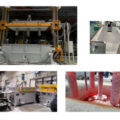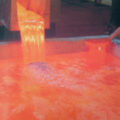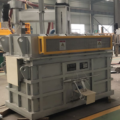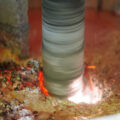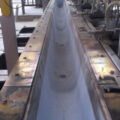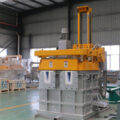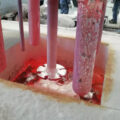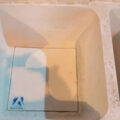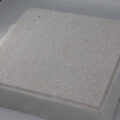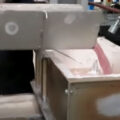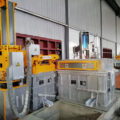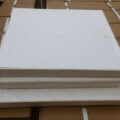The technical field of molten metal degassing filtering relates to the treatment of metals with flux gases and filters.
In fact, molten metal, especially molten aluminum, usually contains entrained and dissolved gaseous and solid impurities, which are harmful to the final cast product. These impurities may affect the final cast product after the molten metal is solidified, which may hinder processing or reduce the ductility of the final product, or the final processing and anodizing performance may deteriorate. Impurities can come from multiple sources. For example, the impurities may include metal impurities such as alkali metals and alkaline earth metals, as well as entrained hydrogen and dissolved surface oxide films that have been decomposed and entrained in molten metal. In addition, inclusions may come from insoluble impurities, such as carbides, borides, or corroded furnace and tank refractories.
There is naturally a great need to improve the molten metal degassing filtering in order to remove or minimize such impurities in the final cast product, especially for molten aluminum, especially when the resulting metal is used in steelmaking. Decorative products, such as decorative borders or plates, or products with key specifications, such as aircraft forgings and extrusions, and lightweight foils. The above-mentioned impurities cause the loss of the properties of the final solidified alloy, such as tensile strength and corrosion resistance, and cause the reduction of processing efficiency and the loss of the performance of the final product. For example, one type of finish defect that is particularly important in decorative trims or sheets is called a linear defect.
Conventional gas smelting processes, such as ordinary hearth smelting, involve introducing the smelting gas into a melting or holding furnace containing a certain amount of molten metal. This procedure requires that the furnace be shut down while the flux gas is circulated so that the metal being processed remains constant and can be processed. This method has many disadvantages, including reduced efficiency due to the furnace being idle for a long time during fluxing, and insufficient efficiency due to the low surface area to volume ratio between the gas flux and the molten metal. Further factors include the limitation of the furnace location, which allows impurities to re-enter the melt before casting, and the high accuracy due to a large amount of flux required and its circulation position.

As an alternative to batch fluxes, certain fluxes are used for online degassing. That is, the operation and related equipment are located outside the melting furnace or holding furnace, and are usually located between the melting furnace and the holding furnace or holding furnace and the casting station. This helps alleviate the inefficiency caused by the furnace shutting down.
Porous ceramic foam materials are particularly suitable for filtering molten metal for a variety of reasons, including excellent filtration efficiency, partly due to their uniformity, controllable pore size and low cost, as well as ease of use and replaceability. The preparation and use of these ceramic foam filters are convenient and cheap, and this fact has prompted the development of devices for convenient and convenient use of these porous molten metal filters in online degassing and filtering devices, thereby providing efficient assembly.

